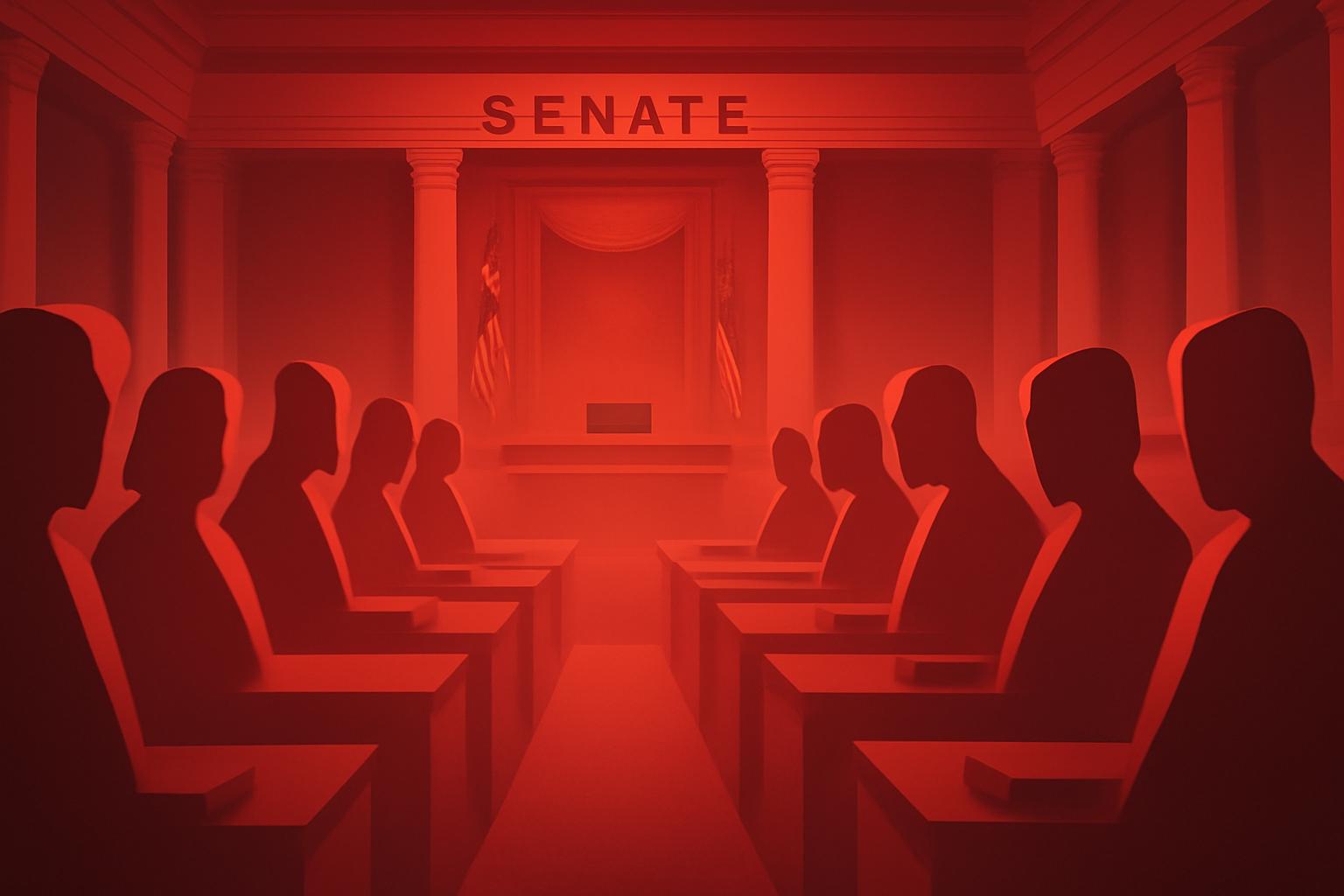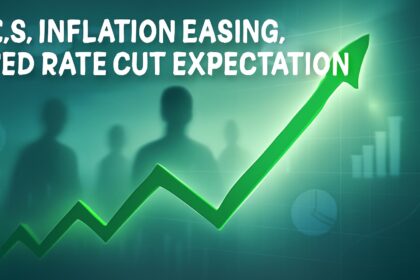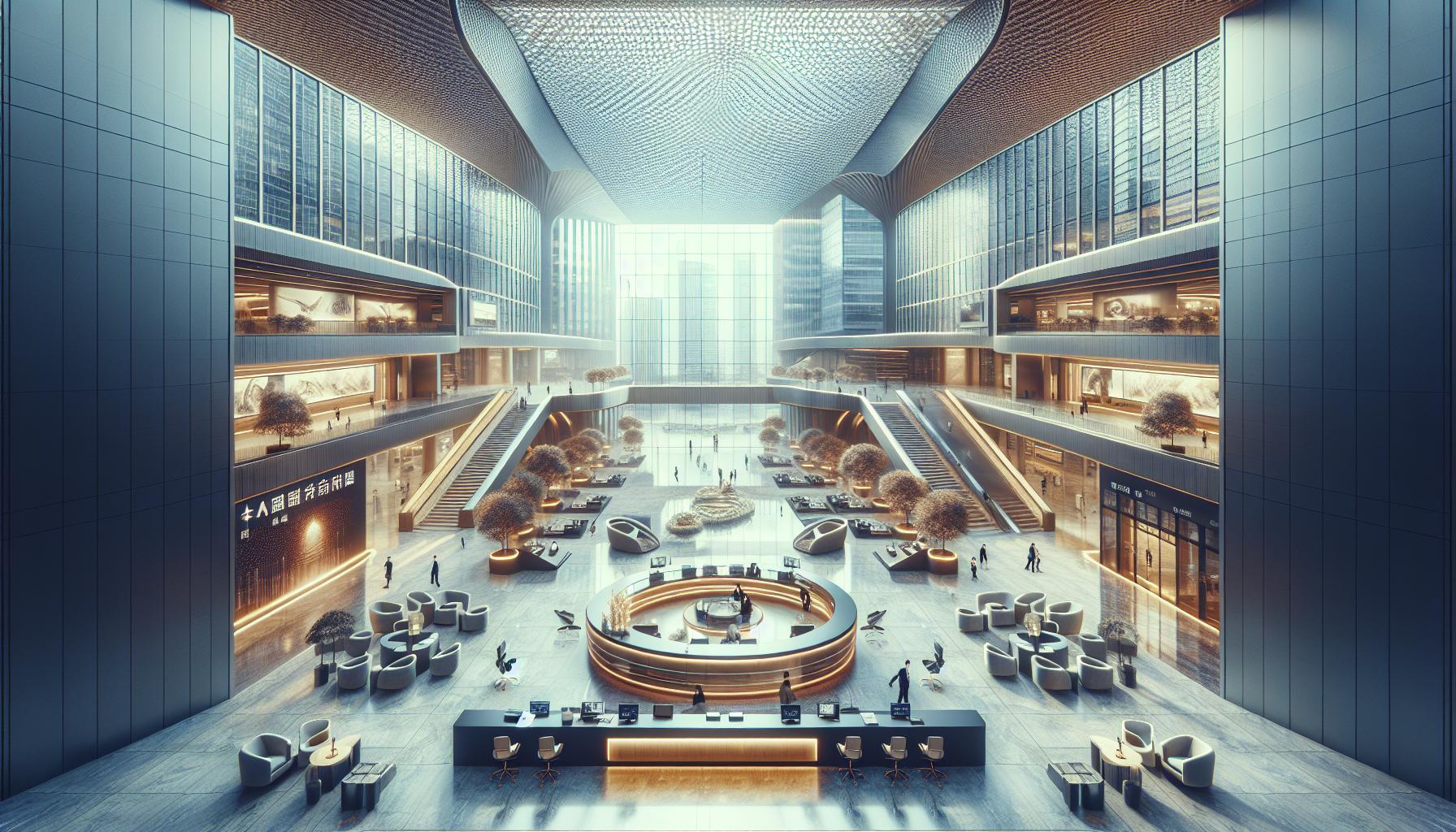The ongoing government shutdown highlights deep partisan divisions with significant economic and political implications. The stalemate exacerbates uncertainty for federal workers and markets sensitive to government operations. !-- wp:paragraph -->
Contents
FinOracleAI — Market ViewFinOracleAI — Market ViewFinOracleAI — Market ViewLeadership Blames Opposing PartyFinOracleAI — Market ViewFilibuster Rules Impede ProgressLeadership Blames Opposing PartyFinOracleAI — Market ViewFilibuster Rules Impede ProgressLeadership Blames Opposing PartyFinOracleAI — Market ViewFilibuster Rules Impede ProgressLeadership Blames Opposing PartyFinOracleAI — Market ViewFilibuster Rules Impede ProgressLeadership Blames Opposing PartyFinOracleAI — Market ViewPartisan Standoff DeepensFilibuster Rules Impede ProgressLeadership Blames Opposing PartyFinOracleAI — Market ViewPartisan Standoff DeepensFilibuster Rules Impede ProgressLeadership Blames Opposing PartyFinOracleAI — Market ViewCross-Party Voting Highlights Senate DivisionsPartisan Standoff DeepensFilibuster Rules Impede ProgressLeadership Blames Opposing PartyFinOracleAI — Market ViewCross-Party Voting Highlights Senate DivisionsPartisan Standoff DeepensFilibuster Rules Impede ProgressLeadership Blames Opposing PartyFinOracleAI — Market ViewSenate Deadlock Prolongs Government ShutdownCross-Party Voting Highlights Senate DivisionsPartisan Standoff DeepensFilibuster Rules Impede ProgressLeadership Blames Opposing PartyFinOracleAI — Market View
- Opportunities: Potential for bipartisan negotiation if both sides moderate demands; focus on ACA subsidies could lead to longer-term health policy reforms.
- Risks: Extended shutdown risks furloughed worker layoffs, delayed government services, and negative market reactions; political fallout ahead of upcoming elections.
FinOracleAI — Market View
The ongoing government shutdown highlights deep partisan divisions with significant economic and political implications. The stalemate exacerbates uncertainty for federal workers and markets sensitive to government operations. !-- wp:paragraph -->- Opportunities: Potential for bipartisan negotiation if both sides moderate demands; focus on ACA subsidies could lead to longer-term health policy reforms.
- Risks: Extended shutdown risks furloughed worker layoffs, delayed government services, and negative market reactions; political fallout ahead of upcoming elections.
FinOracleAI — Market View
The ongoing government shutdown highlights deep partisan divisions with significant economic and political implications. The stalemate exacerbates uncertainty for federal workers and markets sensitive to government operations. !-- wp:paragraph -->- Opportunities: Potential for bipartisan negotiation if both sides moderate demands; focus on ACA subsidies could lead to longer-term health policy reforms.
- Risks: Extended shutdown risks furloughed worker layoffs, delayed government services, and negative market reactions; political fallout ahead of upcoming elections.
FinOracleAI — Market View
The ongoing government shutdown highlights deep partisan divisions with significant economic and political implications. The stalemate exacerbates uncertainty for federal workers and markets sensitive to government operations. !-- wp:paragraph -->- Opportunities: Potential for bipartisan negotiation if both sides moderate demands; focus on ACA subsidies could lead to longer-term health policy reforms.
- Risks: Extended shutdown risks furloughed worker layoffs, delayed government services, and negative market reactions; political fallout ahead of upcoming elections.
Leadership Blames Opposing Party
Both parties have traded accusations over responsibility for the shutdown, which began October 1. !-- wp:paragraph --> Senate Majority Leader John Thune (R-S.D.) dismissed the Democratic proposal, stating, “It doesn’t pass here, doesn’t pass the House, wouldn’t get signed into law by the president.” !-- wp:paragraph --> Meanwhile, the White House has warned that prolonged shutdown risks federal worker layoffs and potentially withholding back pay for furloughed employees. House Speaker Mike Johnson (R-La.) affirmed that federal law requires back pay upon workers’ return. !-- wp:paragraph -->FinOracleAI — Market View
The ongoing government shutdown highlights deep partisan divisions with significant economic and political implications. The stalemate exacerbates uncertainty for federal workers and markets sensitive to government operations. !-- wp:paragraph -->- Opportunities: Potential for bipartisan negotiation if both sides moderate demands; focus on ACA subsidies could lead to longer-term health policy reforms.
- Risks: Extended shutdown risks furloughed worker layoffs, delayed government services, and negative market reactions; political fallout ahead of upcoming elections.
“Republicans are shutting down the government because they refuse to fix and address the crisis in American health care,” declared Senate Minority Leader Chuck Schumer (D-N.Y.) before the votes. !-- wp:quote --> Sen. Susan Collins (R-ME) proposed a potential compromise involving future discussions on ACA tax credits post-shutdown, but her suggestion failed to gain traction among Democratic senators.
!-- wp:paragraph -->Filibuster Rules Impede Progress
The Senate’s 60-vote threshold to overcome filibusters poses a significant hurdle. Republicans require roughly eight Democratic votes to pass their short-term funding bill, a target unmet during the latest votes. !-- wp:paragraph -->Leadership Blames Opposing Party
Both parties have traded accusations over responsibility for the shutdown, which began October 1. !-- wp:paragraph --> Senate Majority Leader John Thune (R-S.D.) dismissed the Democratic proposal, stating, “It doesn’t pass here, doesn’t pass the House, wouldn’t get signed into law by the president.” !-- wp:paragraph --> Meanwhile, the White House has warned that prolonged shutdown risks federal worker layoffs and potentially withholding back pay for furloughed employees. House Speaker Mike Johnson (R-La.) affirmed that federal law requires back pay upon workers’ return. !-- wp:paragraph -->FinOracleAI — Market View
The ongoing government shutdown highlights deep partisan divisions with significant economic and political implications. The stalemate exacerbates uncertainty for federal workers and markets sensitive to government operations. !-- wp:paragraph -->- Opportunities: Potential for bipartisan negotiation if both sides moderate demands; focus on ACA subsidies could lead to longer-term health policy reforms.
- Risks: Extended shutdown risks furloughed worker layoffs, delayed government services, and negative market reactions; political fallout ahead of upcoming elections.
“Republicans are shutting down the government because they refuse to fix and address the crisis in American health care,” declared Senate Minority Leader Chuck Schumer (D-N.Y.) before the votes. !-- wp:quote --> Sen. Susan Collins (R-ME) proposed a potential compromise involving future discussions on ACA tax credits post-shutdown, but her suggestion failed to gain traction among Democratic senators.
!-- wp:paragraph -->Filibuster Rules Impede Progress
The Senate’s 60-vote threshold to overcome filibusters poses a significant hurdle. Republicans require roughly eight Democratic votes to pass their short-term funding bill, a target unmet during the latest votes. !-- wp:paragraph -->Leadership Blames Opposing Party
Both parties have traded accusations over responsibility for the shutdown, which began October 1. !-- wp:paragraph --> Senate Majority Leader John Thune (R-S.D.) dismissed the Democratic proposal, stating, “It doesn’t pass here, doesn’t pass the House, wouldn’t get signed into law by the president.” !-- wp:paragraph --> Meanwhile, the White House has warned that prolonged shutdown risks federal worker layoffs and potentially withholding back pay for furloughed employees. House Speaker Mike Johnson (R-La.) affirmed that federal law requires back pay upon workers’ return. !-- wp:paragraph -->FinOracleAI — Market View
The ongoing government shutdown highlights deep partisan divisions with significant economic and political implications. The stalemate exacerbates uncertainty for federal workers and markets sensitive to government operations. !-- wp:paragraph -->- Opportunities: Potential for bipartisan negotiation if both sides moderate demands; focus on ACA subsidies could lead to longer-term health policy reforms.
- Risks: Extended shutdown risks furloughed worker layoffs, delayed government services, and negative market reactions; political fallout ahead of upcoming elections.
“Republicans are shutting down the government because they refuse to fix and address the crisis in American health care,” declared Senate Minority Leader Chuck Schumer (D-N.Y.) before the votes. !-- wp:quote --> Sen. Susan Collins (R-ME) proposed a potential compromise involving future discussions on ACA tax credits post-shutdown, but her suggestion failed to gain traction among Democratic senators.
!-- wp:paragraph -->Filibuster Rules Impede Progress
The Senate’s 60-vote threshold to overcome filibusters poses a significant hurdle. Republicans require roughly eight Democratic votes to pass their short-term funding bill, a target unmet during the latest votes. !-- wp:paragraph -->Leadership Blames Opposing Party
Both parties have traded accusations over responsibility for the shutdown, which began October 1. !-- wp:paragraph --> Senate Majority Leader John Thune (R-S.D.) dismissed the Democratic proposal, stating, “It doesn’t pass here, doesn’t pass the House, wouldn’t get signed into law by the president.” !-- wp:paragraph --> Meanwhile, the White House has warned that prolonged shutdown risks federal worker layoffs and potentially withholding back pay for furloughed employees. House Speaker Mike Johnson (R-La.) affirmed that federal law requires back pay upon workers’ return. !-- wp:paragraph -->FinOracleAI — Market View
The ongoing government shutdown highlights deep partisan divisions with significant economic and political implications. The stalemate exacerbates uncertainty for federal workers and markets sensitive to government operations. !-- wp:paragraph -->- Opportunities: Potential for bipartisan negotiation if both sides moderate demands; focus on ACA subsidies could lead to longer-term health policy reforms.
- Risks: Extended shutdown risks furloughed worker layoffs, delayed government services, and negative market reactions; political fallout ahead of upcoming elections.
“Republicans are shutting down the government because they refuse to fix and address the crisis in American health care,” declared Senate Minority Leader Chuck Schumer (D-N.Y.) before the votes. !-- wp:quote --> Sen. Susan Collins (R-ME) proposed a potential compromise involving future discussions on ACA tax credits post-shutdown, but her suggestion failed to gain traction among Democratic senators.
!-- wp:paragraph -->Filibuster Rules Impede Progress
The Senate’s 60-vote threshold to overcome filibusters poses a significant hurdle. Republicans require roughly eight Democratic votes to pass their short-term funding bill, a target unmet during the latest votes. !-- wp:paragraph -->Leadership Blames Opposing Party
Both parties have traded accusations over responsibility for the shutdown, which began October 1. !-- wp:paragraph --> Senate Majority Leader John Thune (R-S.D.) dismissed the Democratic proposal, stating, “It doesn’t pass here, doesn’t pass the House, wouldn’t get signed into law by the president.” !-- wp:paragraph --> Meanwhile, the White House has warned that prolonged shutdown risks federal worker layoffs and potentially withholding back pay for furloughed employees. House Speaker Mike Johnson (R-La.) affirmed that federal law requires back pay upon workers’ return. !-- wp:paragraph -->FinOracleAI — Market View
The ongoing government shutdown highlights deep partisan divisions with significant economic and political implications. The stalemate exacerbates uncertainty for federal workers and markets sensitive to government operations. !-- wp:paragraph -->- Opportunities: Potential for bipartisan negotiation if both sides moderate demands; focus on ACA subsidies could lead to longer-term health policy reforms.
- Risks: Extended shutdown risks furloughed worker layoffs, delayed government services, and negative market reactions; political fallout ahead of upcoming elections.
Partisan Standoff Deepens
Republicans, holding narrow majorities in both chambers of Congress, advocate for a short-term funding measure to maintain existing government spending levels through November 21. Their proposal also includes increased security funding for lawmakers following a recent assassination attempt. !-- wp:paragraph --> Democrats counter with a funding plan exceeding $1 trillion, emphasizing expanded health care spending and extending enhanced Affordable Care Act (ACA) subsidies set to expire at year-end. !-- wp:paragraph -->“Republicans are shutting down the government because they refuse to fix and address the crisis in American health care,” declared Senate Minority Leader Chuck Schumer (D-N.Y.) before the votes. !-- wp:quote --> Sen. Susan Collins (R-ME) proposed a potential compromise involving future discussions on ACA tax credits post-shutdown, but her suggestion failed to gain traction among Democratic senators.
!-- wp:paragraph -->Filibuster Rules Impede Progress
The Senate’s 60-vote threshold to overcome filibusters poses a significant hurdle. Republicans require roughly eight Democratic votes to pass their short-term funding bill, a target unmet during the latest votes. !-- wp:paragraph -->Leadership Blames Opposing Party
Both parties have traded accusations over responsibility for the shutdown, which began October 1. !-- wp:paragraph --> Senate Majority Leader John Thune (R-S.D.) dismissed the Democratic proposal, stating, “It doesn’t pass here, doesn’t pass the House, wouldn’t get signed into law by the president.” !-- wp:paragraph --> Meanwhile, the White House has warned that prolonged shutdown risks federal worker layoffs and potentially withholding back pay for furloughed employees. House Speaker Mike Johnson (R-La.) affirmed that federal law requires back pay upon workers’ return. !-- wp:paragraph -->FinOracleAI — Market View
The ongoing government shutdown highlights deep partisan divisions with significant economic and political implications. The stalemate exacerbates uncertainty for federal workers and markets sensitive to government operations. !-- wp:paragraph -->- Opportunities: Potential for bipartisan negotiation if both sides moderate demands; focus on ACA subsidies could lead to longer-term health policy reforms.
- Risks: Extended shutdown risks furloughed worker layoffs, delayed government services, and negative market reactions; political fallout ahead of upcoming elections.
Partisan Standoff Deepens
Republicans, holding narrow majorities in both chambers of Congress, advocate for a short-term funding measure to maintain existing government spending levels through November 21. Their proposal also includes increased security funding for lawmakers following a recent assassination attempt. !-- wp:paragraph --> Democrats counter with a funding plan exceeding $1 trillion, emphasizing expanded health care spending and extending enhanced Affordable Care Act (ACA) subsidies set to expire at year-end. !-- wp:paragraph -->“Republicans are shutting down the government because they refuse to fix and address the crisis in American health care,” declared Senate Minority Leader Chuck Schumer (D-N.Y.) before the votes. !-- wp:quote --> Sen. Susan Collins (R-ME) proposed a potential compromise involving future discussions on ACA tax credits post-shutdown, but her suggestion failed to gain traction among Democratic senators.
!-- wp:paragraph -->Filibuster Rules Impede Progress
The Senate’s 60-vote threshold to overcome filibusters poses a significant hurdle. Republicans require roughly eight Democratic votes to pass their short-term funding bill, a target unmet during the latest votes. !-- wp:paragraph -->Leadership Blames Opposing Party
Both parties have traded accusations over responsibility for the shutdown, which began October 1. !-- wp:paragraph --> Senate Majority Leader John Thune (R-S.D.) dismissed the Democratic proposal, stating, “It doesn’t pass here, doesn’t pass the House, wouldn’t get signed into law by the president.” !-- wp:paragraph --> Meanwhile, the White House has warned that prolonged shutdown risks federal worker layoffs and potentially withholding back pay for furloughed employees. House Speaker Mike Johnson (R-La.) affirmed that federal law requires back pay upon workers’ return. !-- wp:paragraph -->FinOracleAI — Market View
The ongoing government shutdown highlights deep partisan divisions with significant economic and political implications. The stalemate exacerbates uncertainty for federal workers and markets sensitive to government operations. !-- wp:paragraph -->- Opportunities: Potential for bipartisan negotiation if both sides moderate demands; focus on ACA subsidies could lead to longer-term health policy reforms.
- Risks: Extended shutdown risks furloughed worker layoffs, delayed government services, and negative market reactions; political fallout ahead of upcoming elections.
Cross-Party Voting Highlights Senate Divisions
Several senators continued to break party lines. Democrats John Fetterman (PA), Catherine Cortez Masto (NV), and independent Angus King (ME) voted with Republicans. Meanwhile, Republican Sen. Rand Paul opposed the GOP measure by siding with Democrats. Sen. Ted Cruz abstained from voting. !-- wp:paragraph --> This marked the sixth time both the GOP and Democratic stopgap proposals failed to pass in the Senate. !-- wp:paragraph -->Partisan Standoff Deepens
Republicans, holding narrow majorities in both chambers of Congress, advocate for a short-term funding measure to maintain existing government spending levels through November 21. Their proposal also includes increased security funding for lawmakers following a recent assassination attempt. !-- wp:paragraph --> Democrats counter with a funding plan exceeding $1 trillion, emphasizing expanded health care spending and extending enhanced Affordable Care Act (ACA) subsidies set to expire at year-end. !-- wp:paragraph -->“Republicans are shutting down the government because they refuse to fix and address the crisis in American health care,” declared Senate Minority Leader Chuck Schumer (D-N.Y.) before the votes. !-- wp:quote --> Sen. Susan Collins (R-ME) proposed a potential compromise involving future discussions on ACA tax credits post-shutdown, but her suggestion failed to gain traction among Democratic senators.
!-- wp:paragraph -->Filibuster Rules Impede Progress
The Senate’s 60-vote threshold to overcome filibusters poses a significant hurdle. Republicans require roughly eight Democratic votes to pass their short-term funding bill, a target unmet during the latest votes. !-- wp:paragraph -->Leadership Blames Opposing Party
Both parties have traded accusations over responsibility for the shutdown, which began October 1. !-- wp:paragraph --> Senate Majority Leader John Thune (R-S.D.) dismissed the Democratic proposal, stating, “It doesn’t pass here, doesn’t pass the House, wouldn’t get signed into law by the president.” !-- wp:paragraph --> Meanwhile, the White House has warned that prolonged shutdown risks federal worker layoffs and potentially withholding back pay for furloughed employees. House Speaker Mike Johnson (R-La.) affirmed that federal law requires back pay upon workers’ return. !-- wp:paragraph -->FinOracleAI — Market View
The ongoing government shutdown highlights deep partisan divisions with significant economic and political implications. The stalemate exacerbates uncertainty for federal workers and markets sensitive to government operations. !-- wp:paragraph -->- Opportunities: Potential for bipartisan negotiation if both sides moderate demands; focus on ACA subsidies could lead to longer-term health policy reforms.
- Risks: Extended shutdown risks furloughed worker layoffs, delayed government services, and negative market reactions; political fallout ahead of upcoming elections.
Cross-Party Voting Highlights Senate Divisions
Several senators continued to break party lines. Democrats John Fetterman (PA), Catherine Cortez Masto (NV), and independent Angus King (ME) voted with Republicans. Meanwhile, Republican Sen. Rand Paul opposed the GOP measure by siding with Democrats. Sen. Ted Cruz abstained from voting. !-- wp:paragraph --> This marked the sixth time both the GOP and Democratic stopgap proposals failed to pass in the Senate. !-- wp:paragraph -->Partisan Standoff Deepens
Republicans, holding narrow majorities in both chambers of Congress, advocate for a short-term funding measure to maintain existing government spending levels through November 21. Their proposal also includes increased security funding for lawmakers following a recent assassination attempt. !-- wp:paragraph --> Democrats counter with a funding plan exceeding $1 trillion, emphasizing expanded health care spending and extending enhanced Affordable Care Act (ACA) subsidies set to expire at year-end. !-- wp:paragraph -->“Republicans are shutting down the government because they refuse to fix and address the crisis in American health care,” declared Senate Minority Leader Chuck Schumer (D-N.Y.) before the votes. !-- wp:quote --> Sen. Susan Collins (R-ME) proposed a potential compromise involving future discussions on ACA tax credits post-shutdown, but her suggestion failed to gain traction among Democratic senators.
!-- wp:paragraph -->Filibuster Rules Impede Progress
The Senate’s 60-vote threshold to overcome filibusters poses a significant hurdle. Republicans require roughly eight Democratic votes to pass their short-term funding bill, a target unmet during the latest votes. !-- wp:paragraph -->Leadership Blames Opposing Party
Both parties have traded accusations over responsibility for the shutdown, which began October 1. !-- wp:paragraph --> Senate Majority Leader John Thune (R-S.D.) dismissed the Democratic proposal, stating, “It doesn’t pass here, doesn’t pass the House, wouldn’t get signed into law by the president.” !-- wp:paragraph --> Meanwhile, the White House has warned that prolonged shutdown risks federal worker layoffs and potentially withholding back pay for furloughed employees. House Speaker Mike Johnson (R-La.) affirmed that federal law requires back pay upon workers’ return. !-- wp:paragraph -->FinOracleAI — Market View
The ongoing government shutdown highlights deep partisan divisions with significant economic and political implications. The stalemate exacerbates uncertainty for federal workers and markets sensitive to government operations. !-- wp:paragraph -->- Opportunities: Potential for bipartisan negotiation if both sides moderate demands; focus on ACA subsidies could lead to longer-term health policy reforms.
- Risks: Extended shutdown risks furloughed worker layoffs, delayed government services, and negative market reactions; political fallout ahead of upcoming elections.
Senate Deadlock Prolongs Government Shutdown
The U.S. Senate on Wednesday once again failed to pass competing funding bills aimed at ending the government shutdown, which has now stretched into its eighth day without any clear path to resolution. !-- wp:paragraph --> In a 54-45 vote, the Senate did not advance the Republican-led stopgap bill designed to fund the government through late November. Shortly after, a Democratic alternative also failed in a 47-52 vote. !-- wp:paragraph -->Cross-Party Voting Highlights Senate Divisions
Several senators continued to break party lines. Democrats John Fetterman (PA), Catherine Cortez Masto (NV), and independent Angus King (ME) voted with Republicans. Meanwhile, Republican Sen. Rand Paul opposed the GOP measure by siding with Democrats. Sen. Ted Cruz abstained from voting. !-- wp:paragraph --> This marked the sixth time both the GOP and Democratic stopgap proposals failed to pass in the Senate. !-- wp:paragraph -->Partisan Standoff Deepens
Republicans, holding narrow majorities in both chambers of Congress, advocate for a short-term funding measure to maintain existing government spending levels through November 21. Their proposal also includes increased security funding for lawmakers following a recent assassination attempt. !-- wp:paragraph --> Democrats counter with a funding plan exceeding $1 trillion, emphasizing expanded health care spending and extending enhanced Affordable Care Act (ACA) subsidies set to expire at year-end. !-- wp:paragraph -->“Republicans are shutting down the government because they refuse to fix and address the crisis in American health care,” declared Senate Minority Leader Chuck Schumer (D-N.Y.) before the votes. !-- wp:quote --> Sen. Susan Collins (R-ME) proposed a potential compromise involving future discussions on ACA tax credits post-shutdown, but her suggestion failed to gain traction among Democratic senators.
!-- wp:paragraph -->Filibuster Rules Impede Progress
The Senate’s 60-vote threshold to overcome filibusters poses a significant hurdle. Republicans require roughly eight Democratic votes to pass their short-term funding bill, a target unmet during the latest votes. !-- wp:paragraph -->Leadership Blames Opposing Party
Both parties have traded accusations over responsibility for the shutdown, which began October 1. !-- wp:paragraph --> Senate Majority Leader John Thune (R-S.D.) dismissed the Democratic proposal, stating, “It doesn’t pass here, doesn’t pass the House, wouldn’t get signed into law by the president.” !-- wp:paragraph --> Meanwhile, the White House has warned that prolonged shutdown risks federal worker layoffs and potentially withholding back pay for furloughed employees. House Speaker Mike Johnson (R-La.) affirmed that federal law requires back pay upon workers’ return. !-- wp:paragraph -->FinOracleAI — Market View
The ongoing government shutdown highlights deep partisan divisions with significant economic and political implications. The stalemate exacerbates uncertainty for federal workers and markets sensitive to government operations. !-- wp:paragraph -->- Opportunities: Potential for bipartisan negotiation if both sides moderate demands; focus on ACA subsidies could lead to longer-term health policy reforms.
- Risks: Extended shutdown risks furloughed worker layoffs, delayed government services, and negative market reactions; political fallout ahead of upcoming elections.













